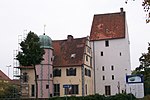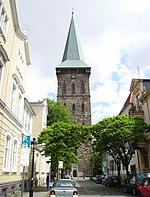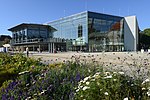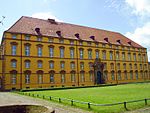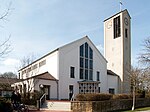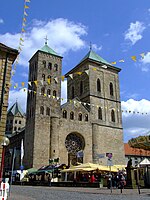Osnabrück Uplands

The Osnabrück Uplands, Osnabrück Hills or, less commonly, Osnabrück Hill Country (German: Osnabrücker Hügelland or Osnabrücker Bergland), are the low hills, or Hügelland, rarely over 200 m above NHN, in the northwest of the Lower Saxon Hills near Osnabrück in Germany. They are bounded by the Wiehen Hills to the north and the Teutoburg Forest to the south. Regionally, especially in tourism, they are often referred to locally as the Osnabrücker Bergland, however this is usually not a precisely defined physical landscape, but refers to an area roughly comprising the municipal boundaries of Osnabrück and a narrow radius around the city. By contrast the natural region major unit known as the Osnabrücker Hügelland extends from north-west of Ibbenbüren to the Melle Hills north of Melle, behind which is their south-eastern continuation, the Ravensberg Hills. The Osnabrück Uplands form the heart of the cultural region of Osnabrück Land. The unpopulated areas of the region, which covers 748.5 km2, are a central part of the TERRA.vita Nature and Geopark.
Excerpt from the Wikipedia article Osnabrück Uplands (License: CC BY-SA 3.0, Authors, Images).Osnabrück Uplands
Johannisstraße, Osnabrück Innenstadt
Geographical coordinates (GPS) Address Nearby Places Show on map
Geographical coordinates (GPS)
| Latitude | Longitude |
|---|---|
| N 52.26728 ° | E 8.05319 ° |
Address
Johannisstraße
Johannisstraße
49074 Osnabrück, Innenstadt
Lower Saxony, Germany
Open on Google Maps

